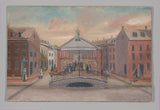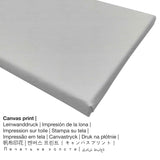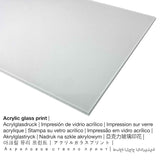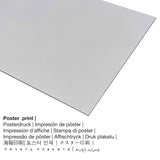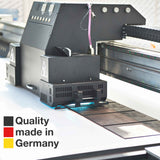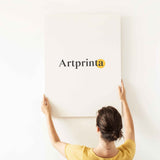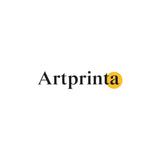William P. Chappel, 1870 - Fly Market - ọmarịcha nka
Ụtụ gụnyere. Mbupu gbakọrọ na ndenye ọpụpụ.
Nkọwa nke ngwaahịa ebipụta
In 1870 na American artist William P. Chappel mere mpempe nka aha ya Fly Market. Ụdị nke ihe nka tụrụ nha: 6 x 9 1/8 na (15,2 x 23,2 cm) na e ji teknuzu nke mmanụ na slate akwụkwọ. Ọzọkwa, artwork gụnyere na dijitalụ art collection nke Museumlọ ihe ngosi nka nke Obodo, nke dị na New York City, New York, Njikota Obodo Amerika. With courtesy of: The Metropolitan Museum of Art, New York, The Edward W. C. Arnold Collection of New York Prints, Maps, and Pictures, Bequest of Edward W. C. Arnold, 1954 (public domain license). In addition, the artpiece has the creditline: Mkpokọta Edward W.C. Arnold nke New York Mbipụta, Map, na Foto, Arịrịọ nke Edward W.C. Arnold, 1954. Ọzọkwa, nhazi nke mmepụta dijitalụ dị na odida obodo format na akụkụ ruru nke 3: 2, nke pụtara na ogologo bụ 50% ogologo karịa obosara.
Artwork specifications by the museum (© - by The Metropolitan Museum of Art - www.metmuseum.org)
In Dutch New Amsterdam, this location was a marshy valley called Smee’s Vly. When the city was under English rule, colonists in the late 1600s established a market here dubbed the "Fly." One of New York’s oldest and most vital marketplaces, the Fly extended up Maiden Lane from the East River and comprised three arcades—for fish, produce, and meat (shown here). Customers could expect a high level of quality due to the atypical degree of oversight provided by the city council that administered a small army of clerks, inspectors, and porters. To the left—at 197 Pearl Street—Chappel pictures the druggist J & T Schieffelin.
Nkọwa gbasara nka nka mbụ
| Aha nke eserese ahụ: | "Fly Market" |
| Nchịkọta nke ọrụ nka: | sere |
| Otu sara mbara: | nkà nke oge a |
| oge: | 19th narị afọ |
| Afọ nka: | 1870 |
| Afọ nka: | 150 afọ |
| Ihe osise izizi: | mmanụ na slate akwụkwọ |
| Nha izizi nka: | 6 x 9 1/8 na (15,2 x 23,2 cm) |
| Ụlọ ihe ngosi nka / ebe: | Museumlọ ihe ngosi nka nke Obodo |
| Ebe ngosi nka: | New York City, New York, Njikota Obodo Amerika |
| Ebe nrụọrụ weebụ ihe ngosi nka: | Museumlọ ihe ngosi nka nke Obodo |
| Ụdị nka nka: | ngalaba ọha |
| Site n'aka: | Ụlọ ihe ngosi nka nke Metropolitan, New York, Edward W.C. Arnold mkpokọta nke New York Mbipụta, Map, na Foto, Arịrịọ nke Edward W.C. Arnold, 1954 |
| kreditline ọrụ nka: | Mkpokọta Edward W.C. Arnold nke New York Mbipụta, Map, na Foto, Arịrịọ nke Edward W.C. Arnold, 1954 |
Ozi ndabere izugbe na onye na-ese ihe
| Aha onye nka: | William P. Chappel |
| Obodo onye nka: | American |
| Ọrụ nke onye na-ese ihe: | onye na-ese ihe |
| Country: | United States |
| nhazi ọkwa: | omenkà nke oge a |
| Afọ ọnwụ: | 77 afọ |
| Afọ ọmụmụ: | 1801 |
| Nwuru: | 1878 |
Nye iwu ihe ị ga-achọ ka kpọgidere na mgbidi gị
Anyị na-enye ihe dị iche iche dị iche iche na nha maka ngwaahịa ọ bụla. Ị nwere ike ịhọrọ n'ime nhọrọ nhazi ngwaahịa ndị a:
- Mbipụta ọla (aluminium dibbond): This is a metal print manufactured on aluminium dibond with a true depth effect - for a modern impression and non-reflective surface. A direct Aluminium Dibond Print is the excellent introduction to the sophisticated world of prints with aluminum. The colors of the print are luminous, fine details appear crisp and clear.
- Kwaaji: The printed canvas applied on a wood frame. Hanging your canvas print: The great advantage of canvas prints is that they are relatively low in weight, which means that it is easy and straightforward to hang up your Canvas print without any wall-mounts. That is why, a canvas print is suited for any type of wall.
- Mbipụta iko acrylic (nke nwere ezigbo mkpuchi iko): An acrylic glass print, which is often named as a UV print on plexiglass, will convert the artwork into beautiful wall décor. Further, it makes a good alternative to aluminium or canvas prints. The artwork is being made with state-of-the-art UV printing technology. The acrylic glass protects your custom art print against light and heat for decades.
- Mbipụta akwụkwọ mmado (ihe kwaaji): Our poster print is a UV printed canvas paper with a fine structure on the surface, which reminds the actual masterpiece. It is suited for placing your art copy in a personal frame. Please note, that depending on the absolute size of the canvas poster print we add a white margin 2-6cm around the artwork in order to facilitate the framing with a custom frame.
Banyere edemede a
| Nkewa ngwaahịa: | ọrụ mgbidi |
| Usoro mmeputakwa: | dijitalụ mmeputakwa |
| Production usoro: | mbipụta dijitalụ (Mbipụta UV ozugbo) |
| Production: | emepụtara na Germany |
| Ụdị ngwaahịa: | mmepụta ihe na-achọ |
| Ojiji ngwaahịa: | ihe ndozi mgbidi, nka mgbidi |
| Nhazi nka nka: | nhazi odida obodo |
| Oke akụkụ: | 3: 2 |
| Ntụgharị nkọwa akụkụ akụkụ: | ogologo bụ 50% ogologo karịa obosara |
| Akwa ngwaahịa dị: | Mpempe iko acrylic (nke nwere ezigbo mkpuchi iko), mbipụta ọla (aluminium dibond), mbipụta akwụkwọ mmado (akwụkwọ kwaaji), mbipụta kwaaji. |
| Nhọrọ nke Canvas Mbipụta (akwa akwa na etiti ihe ndọtị): | 30x20cm - 12x8", 60x40cm - 24x16", 90x60cm - 35x24", 120x80cm - 47x31", 150x100cm - 59x39" |
| Mbipụta iko acrylic (nke nwere ezigbo mkpuchi iko): | 30x20cm - 12x8", 60x40cm - 24x16", 90x60cm - 35x24", 120x80cm - 47x31", 150x100cm - 59x39" |
| Mbipụta akwụkwọ mmado (akwụkwọ kwaaji): | 60x40cm - 24x16", 90x60cm - 35x24", 120x80cm - 47x31" |
| Nha ebipụta aluminium dibond: | 30x20cm - 12x8", 60x40cm - 24x16", 90x60cm - 35x24", 120x80cm - 47x31" |
| Nhazi nke nnomi nka: | ngwaahịa anaghị emebi emebi |
Ederede iwu: We try everything in order to depict our art products in as much detail as it is possible and to illustrate them visually on the different product detail pages. However, the pigments of the printing material, as well as the imprint might diverge slightly from the presentation on the monitor. Depending on the screen settings and the quality of the surface, not all color pigments are printed as exactly as the digital version. Because the art prints are printed and processed manually, there might as well be slight deviations in the motif's exact position and the size.
Nwebiisinka © - Artprinta (www.artprinta.com)

